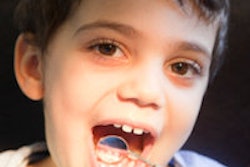
California received a D+ grade for not providing enough oral health services for the state's poorest children, according to the "2016 California Children's Report Card" issued by the advocacy group Children Now.
Caries is the most common chronic illness among children -- five times more common than asthma -- and too few of California's most vulnerable young children are receiving oral health services, according to the 90-page report released on January 6.
"California kids need better oral healthcare," the report authors wrote.
More insured, but few get care
Low-income children have inadequate access to dental care. While 55% of California children (more than 5 million in total) are enrolled in Medi-Cal, the state's Medicaid program, fewer than half received any dental care in 2015. Managing symptoms of tooth caries is 10 times more expensive than providing preventive services, according to the report.
“California kids need better oral healthcare.”
The report authors recommended that the state must give all children access to timely dental care. They also recommended reinvestment in preventive services to treat children where they are, including schools and early learning programs.
As of 2014, some 95% of California's children had health insurance, according to the report. In 2015, 170,000 more children received coverage because of the state's decision to offer insurance to all income-eligible children, regardless of immigration status. Nevertheless, 3 out of 4 uninsured children were eligible for public coverage but continued to go without insurance, the authors noted.
One of the reasons those eligible for public coverage do not have insurance is that parents have to reapply every year for Medicaid coverage for their children, noted Jessica Mindnich, PhD, researcher director for Children Now.
"A lot of times their coverage lapses because they don't reapply," Mindnich told DrBicuspid.com. Also, undocumented parents may have been afraid to apply for government benefits, she added.
"It's pretty significant that all income-eligible children can now get dental coverage," Mindnich said. "Hopefully, it will cause uninsured rates to drop."
Good outreach also is needed to ensure that parents know how to apply for coverage, she said.
More than half of emergency room (ER) visits for dental problems in 2015 were by children 6 years old and younger; however, only 35% of these children had received a preventive care visit to the dentist, according to the report.
In 2011, there were more than 25,000 children's dental-related emergency room visits in California. This cost the state about $4.5 million on preventable oral health ER visits among children enrolled in Denti-Cal, the dental component of Medi-Cal, based on data from the California Health Care Foundation. Additionally, more than 500,000 dental-related school absences cost schools $30 million annually, according to the California Department of Health Care Services.
Children with dental problems also get lower grades, another negative impact for children and families, the report authors noted.
Low reimbursement rates
In half of California's 58 counties, there is no pediatric dentist for children enrolled in Denti-Cal. The state has one of the nation's lowest Denti-Cal reimbursement rates, offering roughly one-third of the rate of private insurers.
"This is a major factor contributing to the shortage of Denti-Cal providers," the report authors wrote. In June 2015, California reversed the 10% rate cuts for Denti-Cal providers that were enacted in 2013, but rates are "still too low," they noted.
The situation was exacerbated in June 2015 when Western Dental, one of the largest providers of California's Denti-Cal program, announced that it would stop accepting new patients covered by the program because of low reimbursements and increased demand. That decision by Western Dental was reversed in during the Fall of 2015
Bright spots
Among the comprehensive approaches for improving access to oral healthcare, the report noted that Sonoma County has done the following:
- Opened new dental clinics.
- Increased the number of pediatric dentists.
- Launched programs such as the Women, Infants and Children Supplemental Nutrition Dental Day Program, in which more than 10,000 patients who would otherwise go untreated have seen an oral health practitioner.
Another bright spot is that California recently received a federal grant to improve oral health and increase use of oral health services for pregnant women and infants at high risk for oral disease. These funds will support a project to integrate oral health and primary care, improving access to both, according to the report.



















